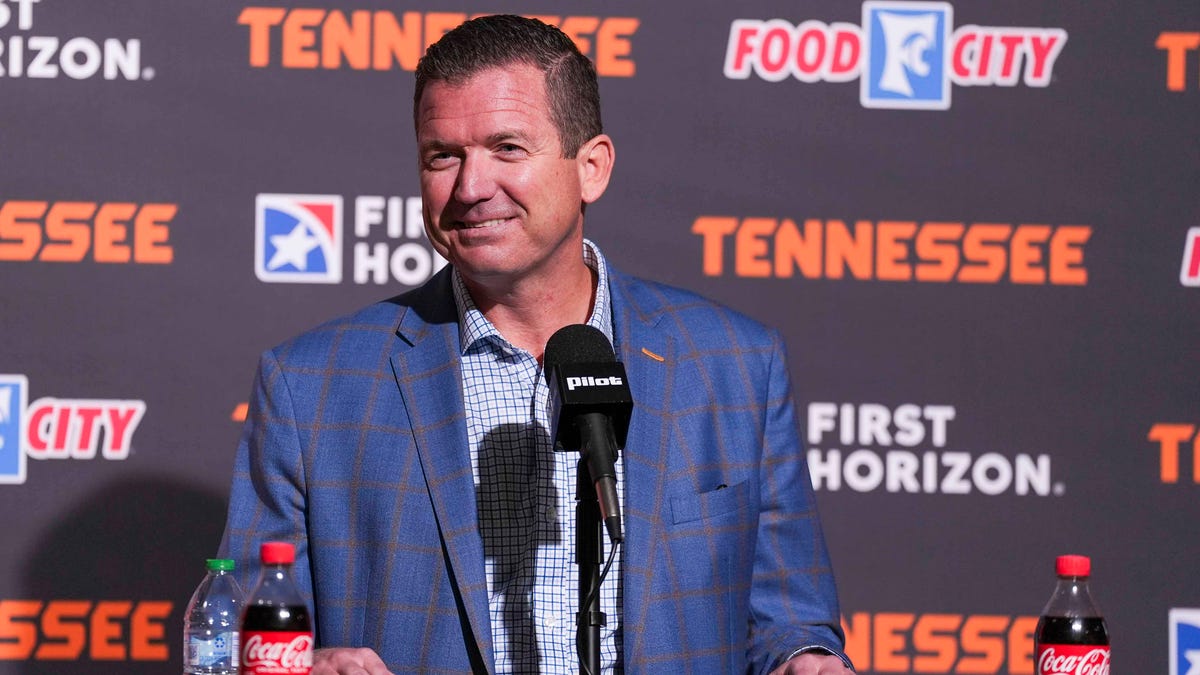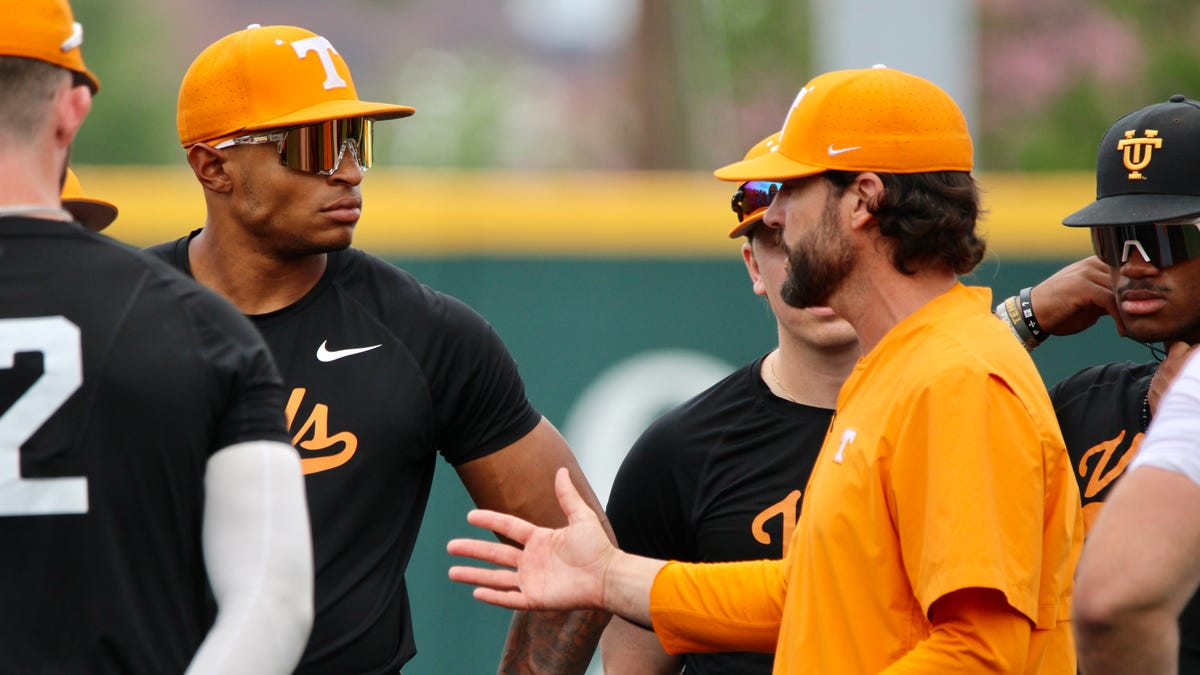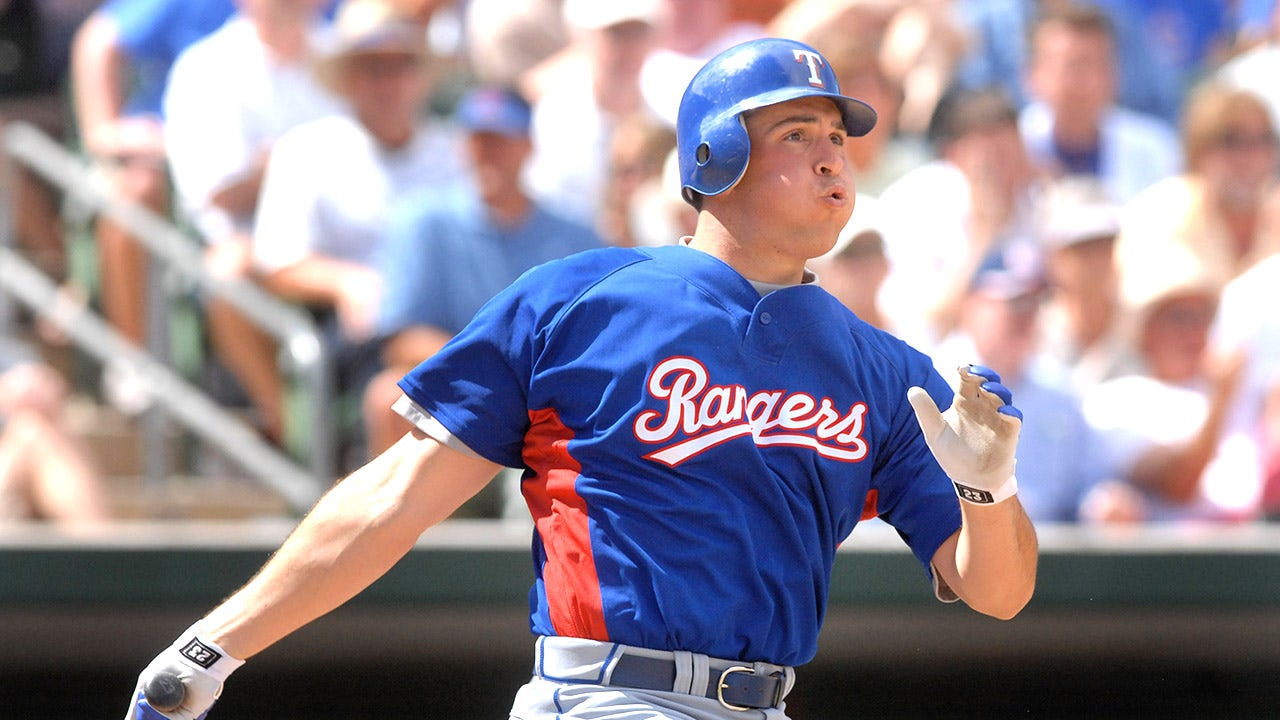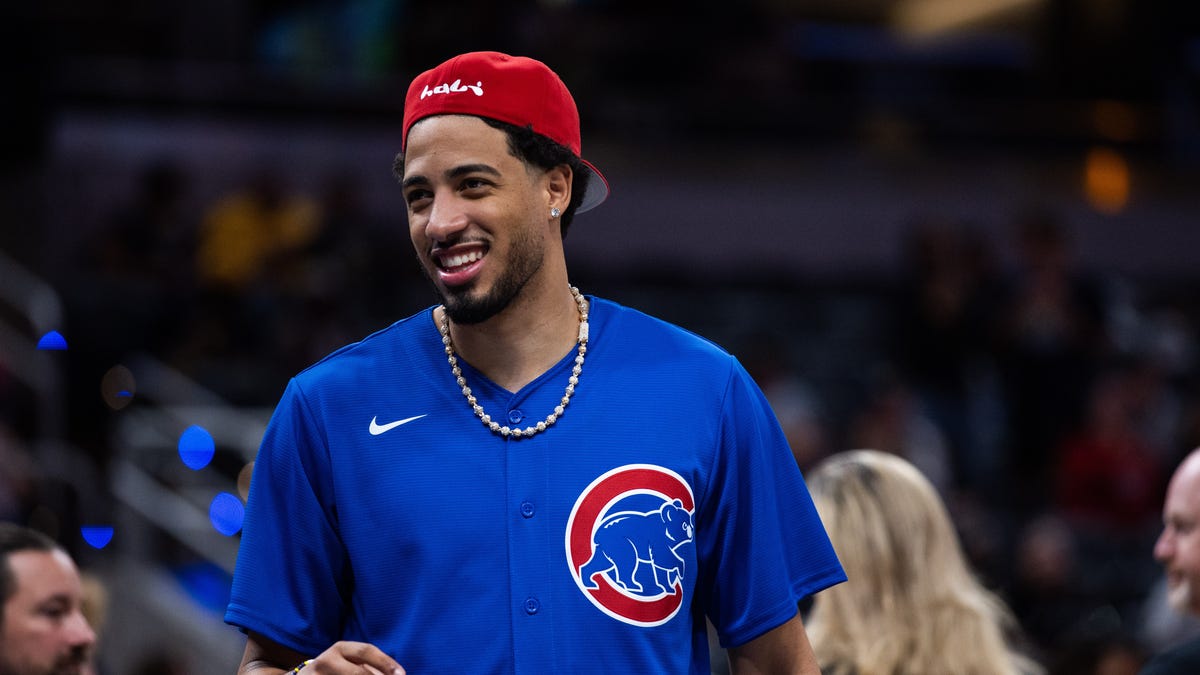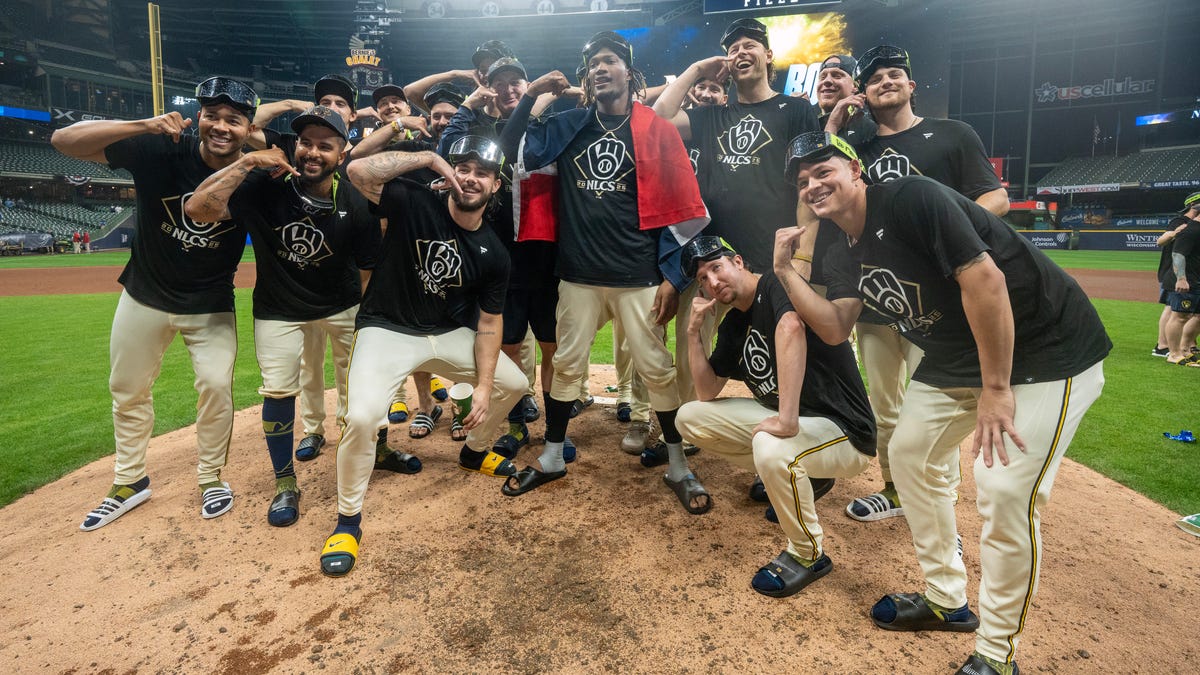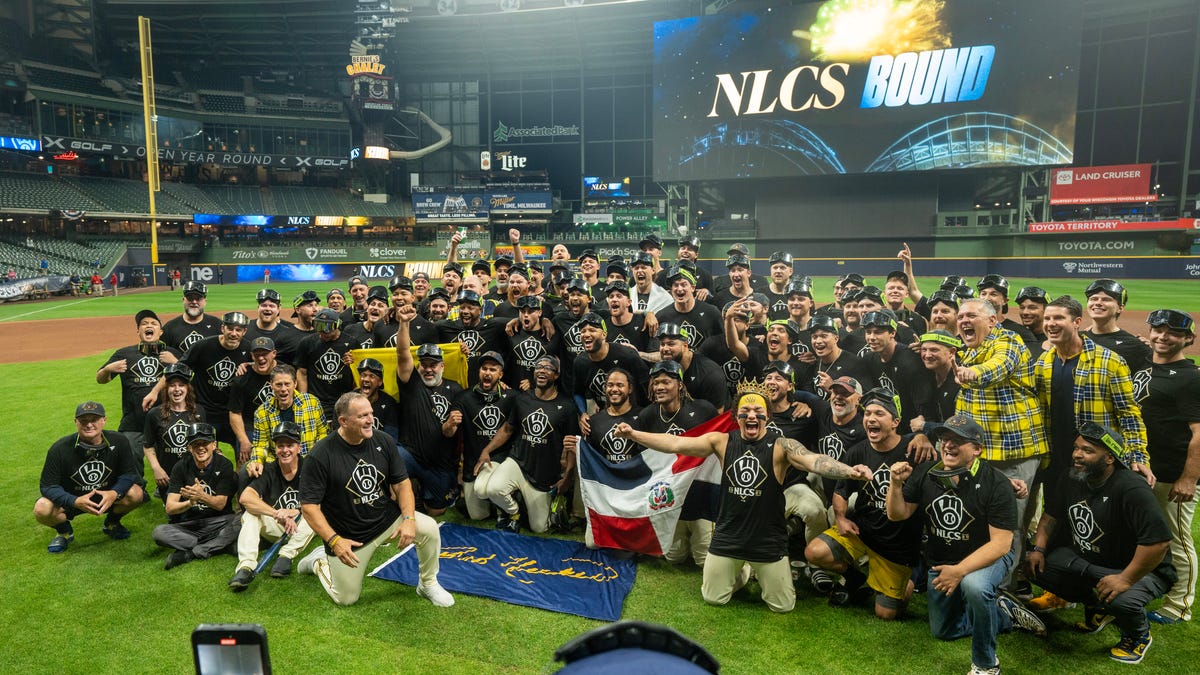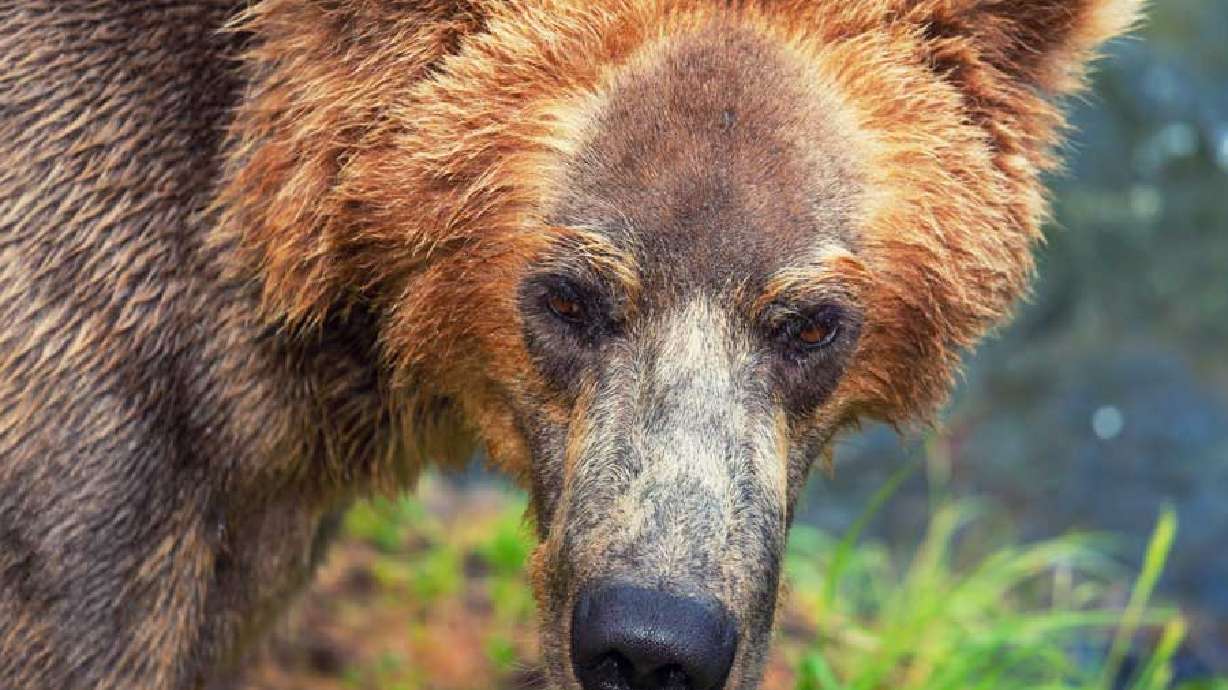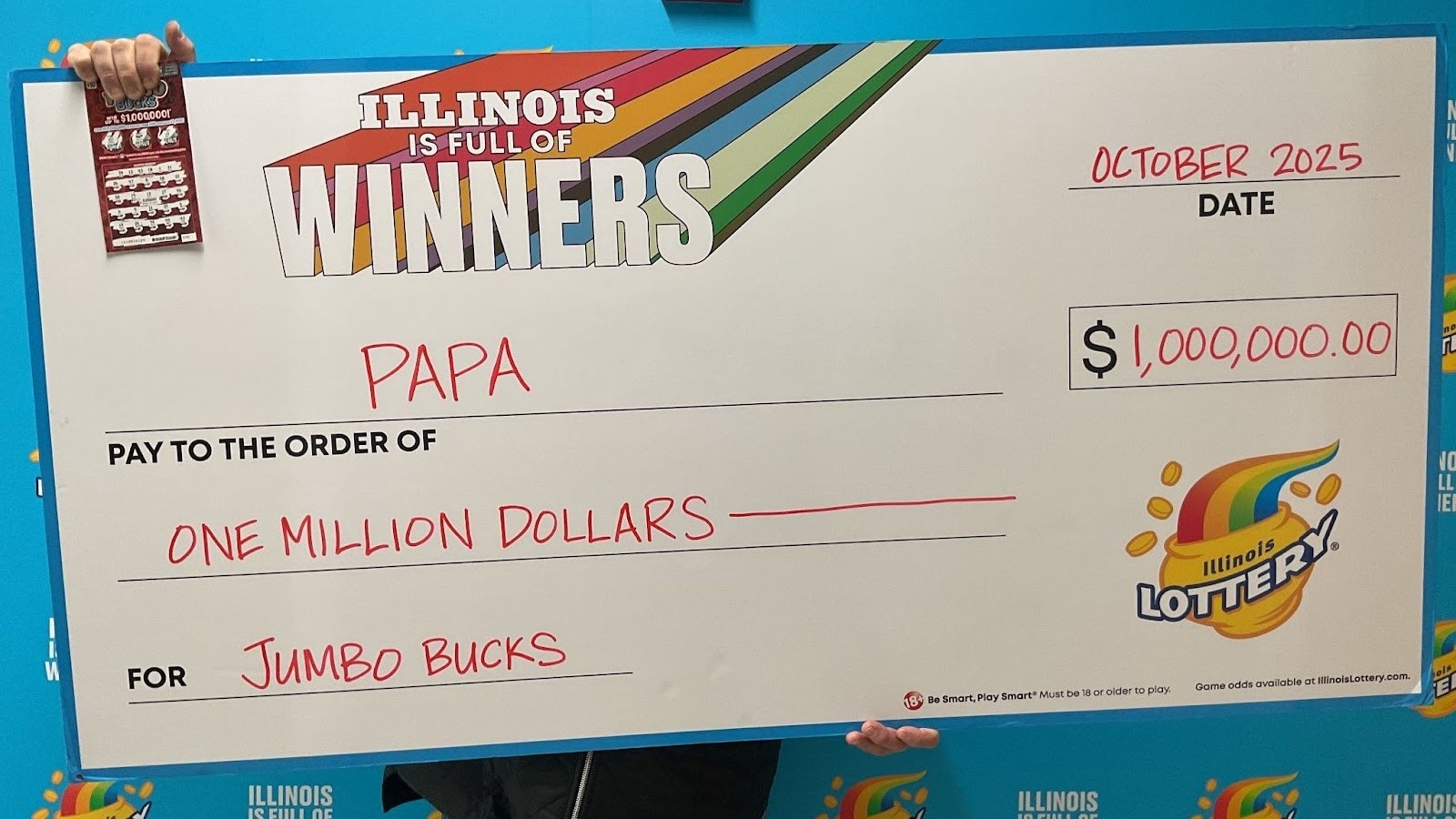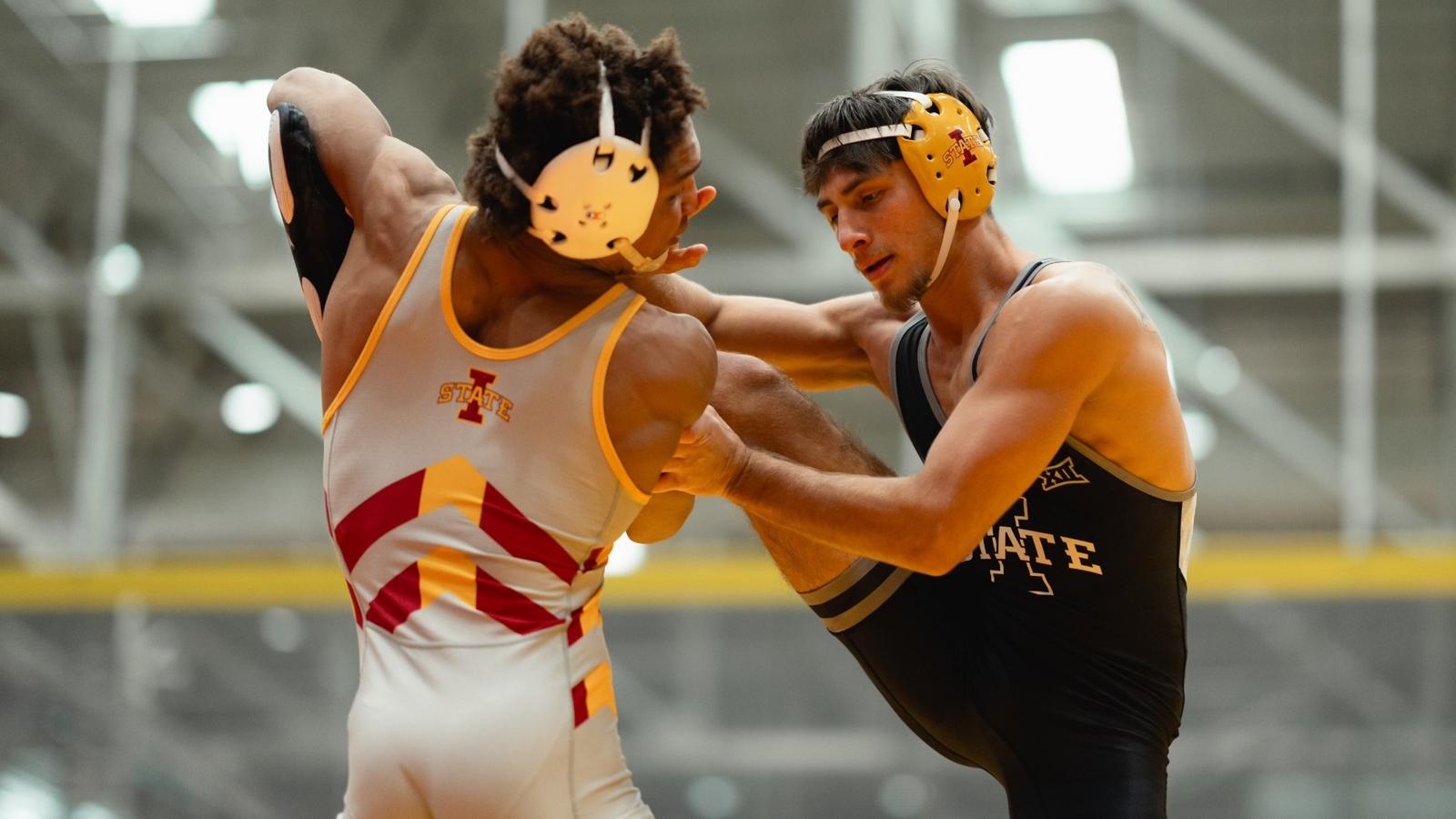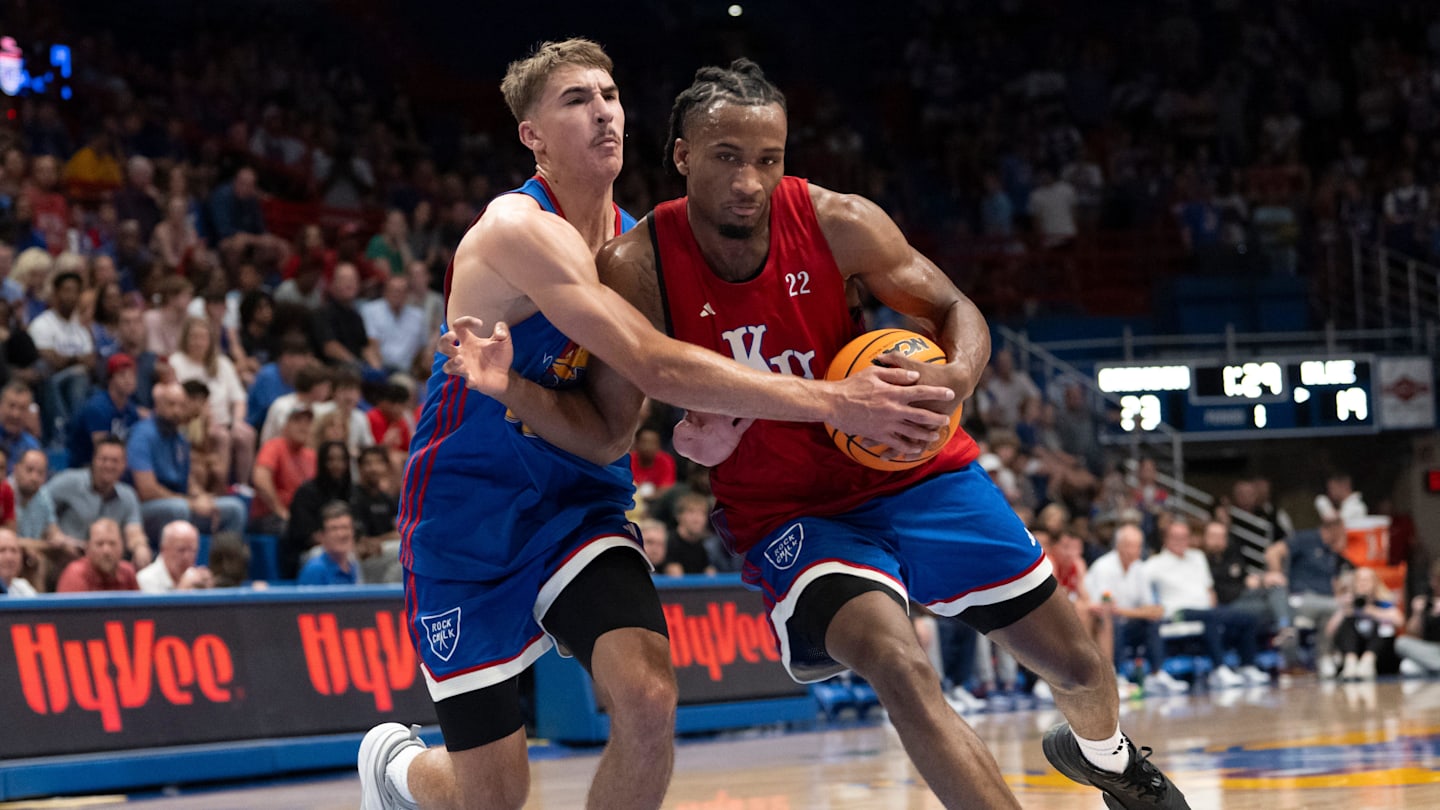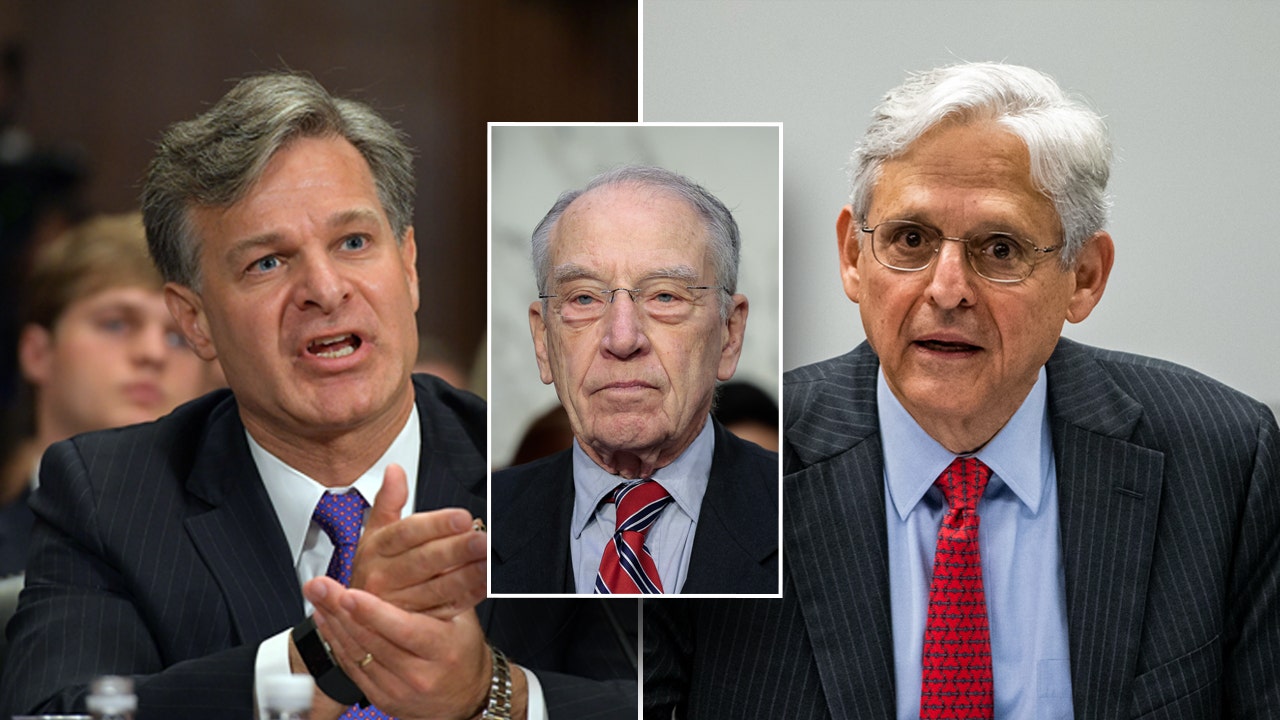Sports
Putting a price tag on extending Kyle Tucker, Dylan Cease and other looming free agents

Monday’s deep dive into Paul Skenes, perhaps the most interesting extension case in baseball, was a sneak peek of Extension Week.
Now I’ll start a broader look at potential extension candidates, concentrating today on players whose value is less speculative: impending free agents.
These players are, in general, less likely to sign an extension with free agency waiting at the end of this season, and my analysis here is basically projecting what each player could earn on the open market before adding in his 2025 salary. If nothing else, it’s an early projection for a free-agent deal this upcoming winter.
Since last spring’s Extension Week, three players actually put pen to paper on an extension, all earning a bit more than I projected:
| Player | Projected | Received |
|---|---|---|
|
4 years, $136M |
3 years, $126M |
|
|
5 years, $82.5M |
10 years, $122.4M |
|
|
6 years, $48M |
6 years, $55M |
*Here and in all other tables, I’ll account for significant deferrals by using the present-day value of the contract when it was signed.
I’ve tried to factor that into the analysis this year.
Here’s how I go about this: I’ve got a big Excel spreadsheet with more than 1,100 free-agent and extension contracts in it, as well as players’ performance in the years leading up to those contracts, as defined by FanGraphs’ wins above replacement. Whereas players get paid off home runs and saves in arbitration, I’ve found fWAR to be a solid (though not all-knowing) predictor of earnings on the open market.
I plug extension candidates into the spreadsheet, find players with similar levels of production (and ideally with similar amounts of team control left) before they signed their deals, and work off of those comps.
A few overall points worth remembering:
- For extensions, team control is important. If Player A looks just like Player B, except Player A has three years of arbitration ahead of him and Player B was a free agent, Player A isn’t going to get the contract Player B did. However, what Player B made in free agency is still useful as a guide to what the later part of Player A’s contract can look like.
- For starting pitchers and position players, I look at fWAR in one-, three- and five-year samples, with a special emphasis on the shorter term. For extensions in particular, the five-year sample is less helpful because a lot of players haven’t been playing for five full years.
- For relievers, I look at one- and two-year samples. What happened five years ago isn’t really relevant for such a volatile position, and I’ve found more of a recency bias in contracts here than elsewhere.
- This is an exercise in player valuation, not commentary on the likelihood of an extension being signed or whether I think a team or player should sign an extension at the value I suggest. I find doing this helpful even when an extension is unlikely because it helps me understand what the market may be once a player reaches free agency or to see how the player’s value has changed over time.
As we go through this, keep in mind:
- The actual extension projection in all cases includes what the player is slated to make this season. It will likely contain a lower AAV (average annual value) than the player would get on the open market for this reason.
- These players should have higher projections this year than last year. Last year, they were two years removed from free agency, and they were slated to make below market value via arbitration.
- The number in parentheses is the player’s age on July 1 of this year.
- In the charts, “Today AAV” is the average annual value of the deal adjusted for inflation.
Vladimir Guerrero Jr. (26)
Maybe no one in baseball had a better year for their potential earnings than Guerrero. His 5.5-win season (according to FanGraphs) washed away any concerns after a pedestrian 2023 and reminded the sport that he’s one of its very best hitters. Plus, a player with similar strengths and weaknesses signed for more than $750 million. So Guerrero is in significantly better shape this spring than he was last spring.
Earlier in spring training, I broke down why Guerrero’s value in an extension has proven difficult to pin down. At the moment, he looks like he belongs just below the second tier of free-agent contracts for first basemen (Miguel Cabrera is the sole occupant of the top tier).
|
Player
|
Signed
|
Ages
|
fWAR1
|
fWAR3 ▼ |
fWAR5
|
Years
|
Total
|
Today AAV
|
|---|---|---|---|---|---|---|---|---|
|
2012 |
32-41 |
3.9 |
19.1 |
35.5 |
10 |
240 |
33.6 |
|
|
2014 |
30-39 |
6.4 |
17.9 |
21.4 |
10 |
225 |
30.6 |
|
|
2019 |
31-35 |
5.2 |
15.4 |
26.9 |
5 |
130 |
32.8 |
|
|
2009 |
29-36 |
6.9 |
14.8 |
24.9 |
8 |
180 |
33.8 |
|
|
2025 |
26 |
5.5 |
10.1 |
16.7 |
Extending a deal for a massive 14 free-agent years would limit the AAV just a touch, to about $30 million. I know, I know: A deal that long comes off as crazy. But there have been a dozen players who have signed deals at least nine years in length in the last three offseasons — or just shy of the number of contracts that long that were signed over the prior decade. Four of them (Juan Soto, Trea Turner, Manny Machado and Xander Bogaerts) extend through a player’s age-40 season, as this one would for Guerrero.
2024 extension projection: Seven years, $185 million
2025 Salary: $28.5 million
2025 extension projection: 15 years, $450 million
Kyle Tucker (28)
If Tucker had remained healthy last season and continued playing the way he did in the first half of the season, his best statistical comp would be… Soto. Because of his age, Tucker wouldn’t have been able to get as long a deal as Soto, but he would have been able to make a case for a similar average annual value.
The comps are not bad as is.
|
Player
|
Signed
|
Ages
|
fWAR1
|
fWAR3 ▼ |
fWAR5
|
Years
|
Total
|
Today AAV
|
|---|---|---|---|---|---|---|---|---|
|
2019 |
26-35 |
6.2 |
14.9 |
23.8 |
10 |
300.0 |
37.8 |
|
|
2009 |
29-36 |
6.9 |
14.8 |
24.9 |
8 |
180.0 |
33.8 |
|
|
2025 |
28 |
4.2 |
14.1 |
22.9 |
||||
|
2025 |
31-33 |
4.1 |
14.0 |
20.5 |
3 |
90.0 |
30.0 |
|
|
2012 |
28-36 |
4.7 |
13.2 |
19.2 |
9 |
214.0 |
33.3 |
Tucker should be able to secure a deal through at least his age-36 season, and it’s not hard for him to argue he should go longer than either Teixeira or Fielder. Let’s go with 10 years at about $35 million each before adding in this season’s salary.
2024 extension projection: Eight years, $204 million
2025 salary: $16.5 million
2025 extension projection: 11 years, $366 million
Dylan Cease (29)
Last season, Cease and Zac Gallen entered in a similar spot: at the same age, earning about the same in arbitration, in line for about the same extension. Then, while Gallen had a nice season, Cease posted another top-five finish in the Cy Young balloting. He’s placed himself in the same group as the top earning starters from this past winter.
|
Player
|
Signed
|
Ages
|
fWAR1
|
fWAR3 ▼ |
fWAR5
|
Years
|
Total
|
Today AAV
|
|---|---|---|---|---|---|---|---|---|
|
2025 |
29 |
4.8 |
12.8 |
17.8 |
||||
|
2025 |
30-35 |
3.7 |
11.8 |
24.2 |
6 |
193.8 |
32.3 |
|
|
2015 |
31-36 |
5.6 |
11.6 |
19.1 |
6 |
155.0 |
35.1 |
|
|
2025 |
31-38 |
3.4 |
10.1 |
17.6 |
8 |
218.0 |
27.3 |
Lester sets the high end for Cease, and that comp suggests Cease can in fact get more than Burnes just did from the Diamondbacks. Both point to a deal buying out six free-agent years. Let’s estimate those at just under $33 million and add in this year’s salary.
2024 extension projection: Seven years, $140 million
2025 salary: $13.75 million
2025 extension projection: Seven years, $210 million
Zac Gallen (29)
Right now, Gallen isn’t quite on the same level as Cease.
|
Player
|
Signed
|
Ages
|
fWAR1
|
fWAR3
|
fWAR5
|
Years
|
Total
|
Today AAV
|
|---|---|---|---|---|---|---|---|---|
|
2016 |
30-35 |
4.0 |
9.4 |
17.0 |
6 |
130.0 |
29.0 |
|
|
2016 |
30-34 |
3.0 |
12.0 |
18.7 |
5 |
110.0 |
29.5 |
|
|
2025 |
29 |
2.8 |
12.2 |
15.6 |
This sets him up for roughly the 2025 version of Cueto’s deal in free agency: six years and $174 million, before adding this year’s salary.
2024 extension projection: Seven years, $140 million
2025 salary: $13.5 million
2025 extension projection: Seven years, $187 million
Framber Valdez (31)
Valdez has had just as much success as Cease and Gallen; the issue for him is he’s two years older than those guys. Starters who hit the open market entering their age-32 season seldom sign for more than three or four years. (The exceptions are guys like Zack Greinke, CC Sabathia and Cliff Lee, who all owned Cy Young awards.)
|
Player
|
Signed
|
Ages
|
fWAR1
|
fWAR3
|
fWAR5
|
Years
|
Total
|
Today AAV
|
|---|---|---|---|---|---|---|---|---|
|
2016 |
30-35 |
4.0 |
9.4 |
17.0 |
6 |
130.0 |
29.0 |
|
|
2016 |
30-34 |
3.0 |
12.0 |
18.7 |
5 |
110.0 |
29.5 |
|
|
2025 |
31 |
3.6 |
12.4 |
16.8 |
Let’s stick with the same comps as Gallen but only for four free-agent years rather than six.
2024 extension projection: Five years, $105 million
2025 salary: $18 million
2025 extension projection: Five years, $134 million
Devin Williams (30)
Just looking at the raw numbers isn’t charitable to Williams, who on a per-appearance basis is right there with recent closers who signed four-year deals like Raisel Iglesias and Tanner Scott. (Williams missed roughly two-thirds of last season.)
|
Player
|
Signed
|
Ages
|
fWAR1
|
fWAR2
|
Years
|
Total
|
Today AAV
|
|---|---|---|---|---|---|---|---|
|
2022 |
32-35 |
2.0 |
5.0 |
4.0 |
58 |
16.4 |
|
|
2025 |
30 |
1.6 |
4.5 |
4.0 |
72.0 |
18.0 |
|
|
2025 |
30 |
0.8 |
2.6 |
Given that no position gets paid on reputation quite the way closer does, Williams could still be in line for a deal that rivals Scott’s, before adding in this year’s salary.
2024 extension projection: N/A
2025 salary: $8.6 million
2025 extension projection: Five years, $80 million
(Top photo of Dylan Cease: Orlando Ramirez / Getty Images)

Sports
Charles Barkley, Kenny Smith clash over FBI gambling probe allegedly involving NBA figures: ‘That’s stupidity’
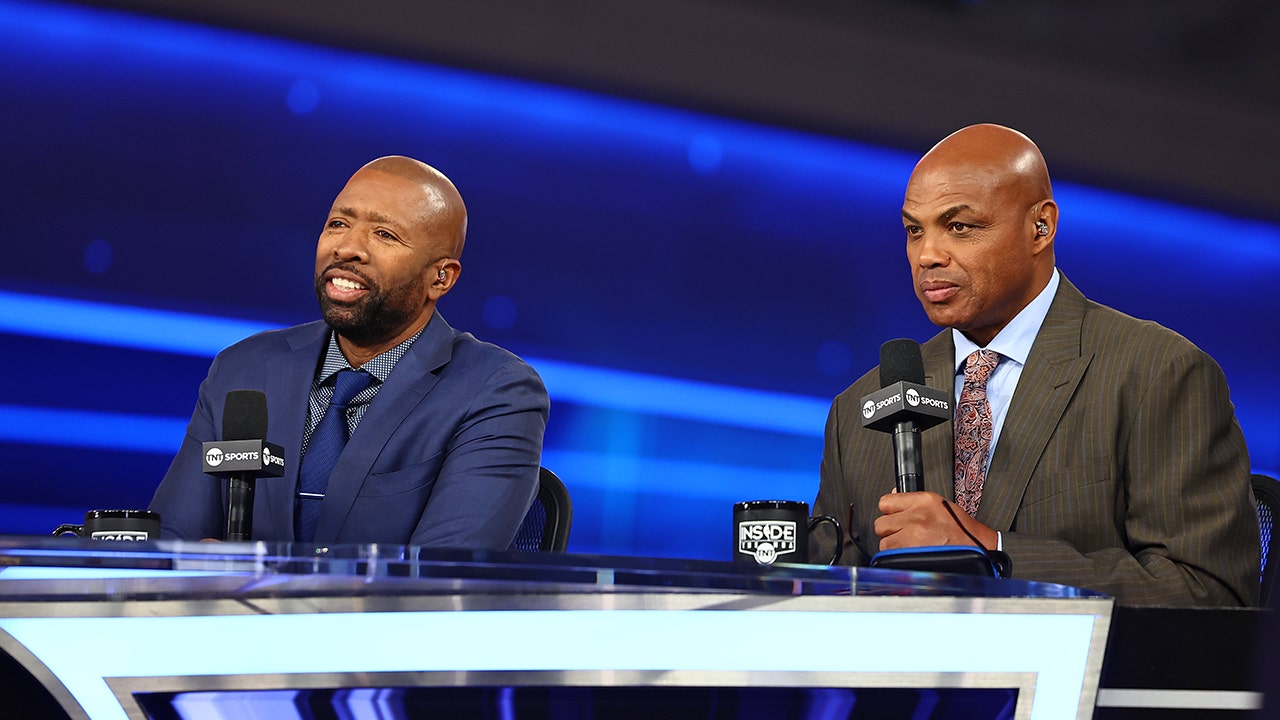
NEWYou can now listen to Fox News articles!
The biggest story in sports, let alone the NBA, was the FBI gambling probe that was announced on Thursday, which involved the arrests of Portland Trail Blazers head coach Chauncey Billups, Miami Heat guard Terry Rozier and former NBA guard Damon Jones among many others.
During ESPN’s “Inside The NBA,” the panel of Shaquille O’Neal, Ernie Johnson, Kenny Smith and Charles Barkley discussed the situation, but it resulted in a bit of a heated back and forth between Smith and Barkley.
Smith began with his lengthy take on the situation.
Portland Trail Blazers coach Chauncey Billups leaves the Mark O. Hatfield U.S. Courthouse after a hearing following his arrest on federal gambling charges in Portland, Oregon, U.S., Oct. 23, 2025. (REUTERS/John Rudoff)
“We look at players who are involved and people who are involved, we’re surprised when you have access and you’re at the top of the game, so to speak as a coach or a player or whatever at the top of the game, you have access to millions of dollars in this league. So, it was surprising that they put themselves in that position possibly. Innocent until proven guilty,” he said.
Smith’s next point is what ticked off Barkley, who was visibly frustrated at the desk.
“I think the other part is you have to realize gambling is an addiction, so the addiction of it is what makes you make illogical decisions,” Smith continued. “… The FBI Director [Kash Patel] said, there’s a man who lost $1.8 million. That means he has a lot of money, so he has an addiction to that. Those ‘fish’ that they talked about bringing in. So, gambling is an addiction which could make you make illogical decisions regardless of your ethnic background, regardless of your physical background, regardless of your financial status. So, let’s understand that.
OREGON SEN. RON WYDEN REACTS TO FBI PROBE INVOLVING TRAIL BLAZERS COACH CHAUNCEY BILLUPS: ‘VERY SAD DAY’
“I disagree in terms of the NBA dropping the ball. This is an ongoing investigation. There’s no way that any FBI, or police even, who anyone would say, ‘Hey, this is what we’re doing.’ The surprise element always makes it happen so they cannot overextend the information they’re receiving.
As Smith told Barkley he would let him talk once he made his final point, Barkley couldn’t hold back.
“I wish you would because you’re making me mad right here,” Barkley said.
“I also think that because there’s people getting speeding tickets it doesn’t mean everyone in the league speeds. So, don’t look at this group of people that started to get investigated as the entire league,” Smith concluded.
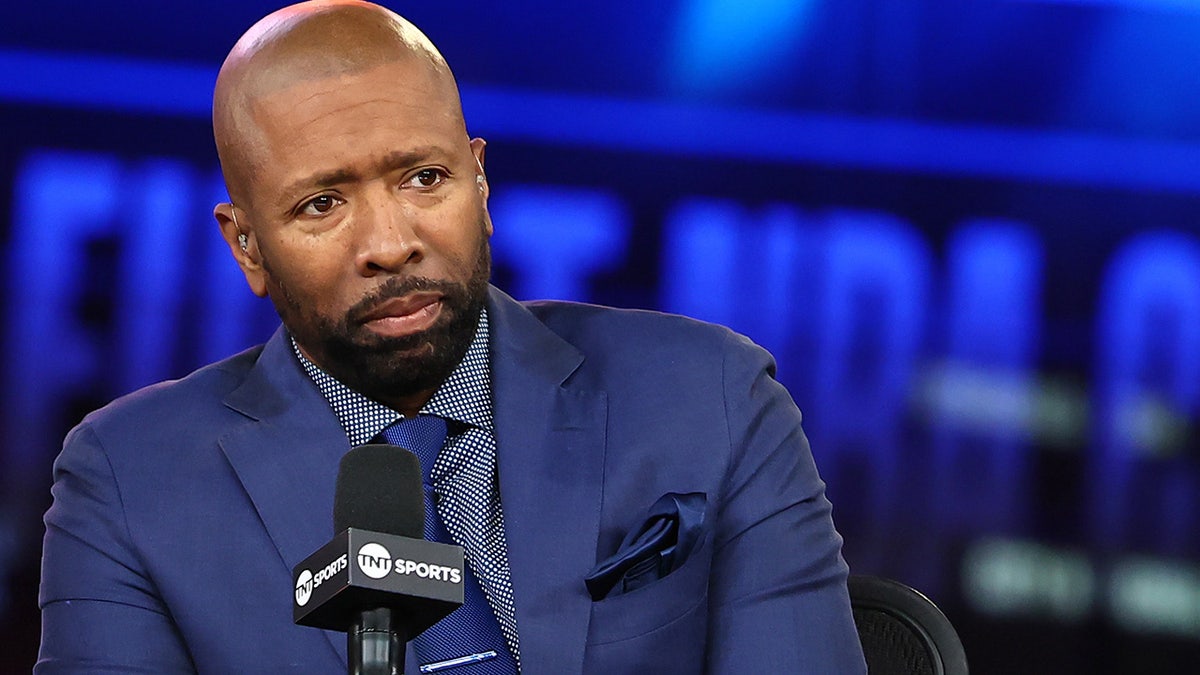
Kenny Smith, looks on before the game between the New Orleans Pelicans and Los Angeles Lakers as part of the 2023 NBA In-Season Tournament on December 7, 2023, at T-Mobile Arena in Las Vegas, Nevada. (Mike Kirschbaum/NBAE via Getty Images)
Then, it was Barkley’s turn to speak.
“First of all, these are two different things,” he began. “Take Chauncey out of the equation, and the reason I’m mad at Kenny is this has nothing to do with a damn gambling addiction. This ain’t got nothing to do with addiction. These dudes are stupid. You can, under no circumstances, fix basketball games. Under no circumstances. I love to gamble. Rozier makes $26 million. Him giving people information or taking himself out of games, how much is he going to benefit taking himself out of games to hit unders? He’s making $26 million.”
Smith butted in, as he said Barkley was proving his point.
“If you’re making $26 million to try to when $50,000, that’s illogical,” Smith said.
Barkley fired back, reiterating his belief that those involved were not gambling addicts, but rather “that’s stupidity.”
“The notion that guys are making all this money and giving information, stop that. That’s got nothing to do with addiction. It’s total stupidity on those two’s parts,” Barkley said.
O’Neal gave his take prior to the Smith and Barkley debate. He said the league gave forums to inform players about the dangers of gambling.
“All these guys knew what was at stake and I’m just ashamed that they put themselves, put their family and put the NBA in this position,” O’Neal said. “You all know the rules, we all know the letter of the law and it’s just unfortunate. Innocent until proven guilty, but usually when the FBI has something, they have you.”
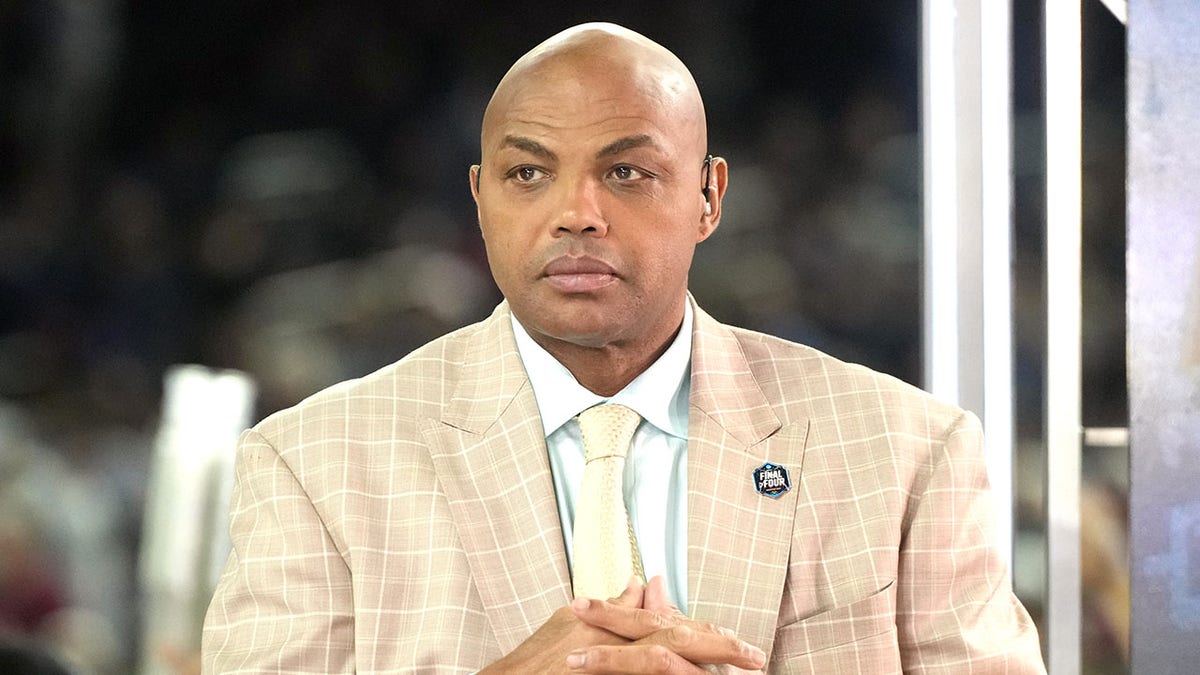
College basketball analyst Charles Barkley on air before the NCAA Men’s Basketball Tournament Final Four championship game. (Mitchell Layton/Getty Images)
Billups, a Basketball Hall of Famer like the men on the panel, left an Oregon federal courthouse on Thursday, where he didn’t answer questions after being arrested as part of the FBI investigation. Billups was charged with conspiracy to commit wire fraud and money laundering, as he was allegedly involved in the rigged poker games investigation.
Billups was released from custody under the conditions of turning over his passport, not contacting any of the 30-plus co-defendants charged, and not participating in any gambling activity.
Rozier was allegedly involved in the sports gambling ring, where schemers were allegedly giving non-public information about who would be sitting out future games or when they would be pulling themselves out early for injuries or illnesses.
New York City Police Commissioner Jessica Tisch said Rozier faked an injury to leave a March 23, 2023, game between the Charlotte Hornets and New Orleans Pelicans. Rozier was alleged to have told co-defendant Deniro Laster that he would take himself out of the game so Laster could bet on it.
The NBA cooperated with the investigation and placed Billups and Rozier on an immediate leave of absence.
Follow Fox News Digital’s sports coverage on X, and subscribe to the Fox News Sports Huddle newsletter.
Sports
Chargers exorcise demons from loss to Colts with dominant win over Vikings
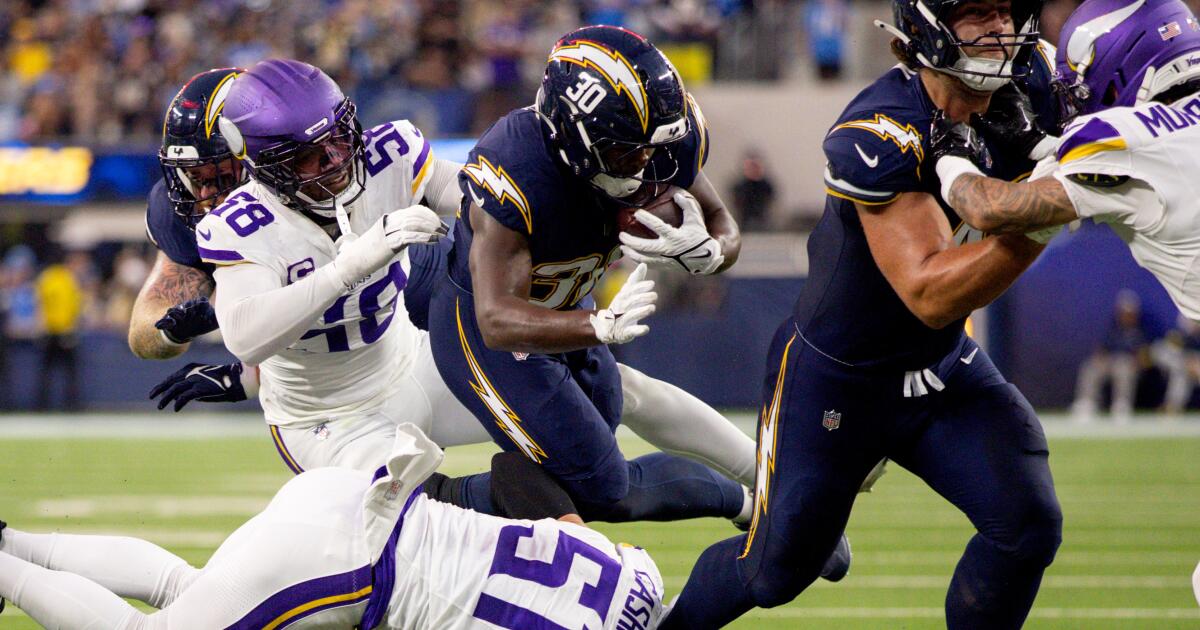
In four days, the Chargers’ defense went from rattled to relentless.
The Minnesota Vikings were the victims, unable to move the ball Thursday night against a unit that looked shaky and unsure of itself in a humbling loss to Indianapolis the previous Sunday.
That, along with the consistently excellent play of quarterback Justin Herbert and a solid ground attack, paved the way for a 37-10 victory by the Chargers before a national audience.
The game marked the first time the Chargers scored 30 points or more. They didn’t punt all game, something that hadn’t happened since Week 16 of 2021. They had 29 first downs to 12 by the Vikings.
The performance looked much closer to one the Chargers might have turned in last season, when they led the AFC by allowing just 18.5 points per game. In the previous three games, the Chargers had allowed an average of 30.6.
The Chargers turned in the defensive gem without the services of All-Pro safety Derwin James Jr., the team’s leading tackler who left in the first half with an ankle injury. His backup, Tony Jefferson, was hobbled by a hamstring injury, leaving the duties to rookie R.J. Mickens, who had an interception early in the fourth quarter.
The decisive victory propels the Chargers into their mini-bye on a high note, washing away some of the bad taste of three losses in the previous four weeks. Their next game is at the one-win Tennessee Titans on Nov. 2.
That means the Chargers will have more time to heal, vital for a team so banged up.
The Chargers rushed for 207 yards, the most since coach Jim Harbaugh’s first two games with the team last season. Running back Kimani Vidal ran for 117 yards and a touchdown.
Chargers quarterback Justin Herbert throws during the second half against the Vikings on Thursday.
(Eric Thayer / Los Angeles Times)
The emphasis on the run was far more Harbaugh’s style than the 55 pass attempts Sunday in the 38-24 loss to the Colts, when the Chargers spent all game trying to claw their way out of a ditch.
Herbert threw for 227 yards and three touchdowns.
Minnesota was hurting at quarterback with Carson Wentz playing with a brace on his left, non-throwing shoulder. At various times, he was holding his limp arm and wincing on the sideline. He was under near-constant pressure from the Chargers’ pass rush.
Late in the fourth quarter, Wentz was leveled from the blindside by blitzers Cam Hart and Troy Dye. The quarterback lay on the ground in what looked to be excruciating pain for a moment, got up, ran to the sideline and flung his helmet in frustration.
Rookie quarterback Max Brosmer finished the game for the Vikings, who dropped to 3-4. J.J. McCarthy is nursing an injured ankle but is likely to return at quarterback soon.

Chargers safety R.J. Mickens (27) shows his excitement after intercepting a pass from Vikings quarterback Carson Wentz in the second half Thursday.
(Eric Thayer / Los Angeles Times)
Khalil Mack, wearing a brace on his injured elbow, was a nightmare for Vikings blockers and spent much of his time in the Minnesota backfield.
As well as the Chargers played, they got off to a terrible start. On their second snap, Herbert threw a short pass to his left that apparently was intercepted by diving cornerback Isaiah Rodgers and returned for an 18-yard touchdown.
The play was nullified, however, when replays showed that the football moved when Rodgers hit the ground before climbing to his feet.
Having survived that scare, the Chargers took advantage of their new life with a 14-play drive capped by an eight-yard touchdown reception by rookie Oronde Gadsden II.
Herbert has been pressured and hit more than any NFL quarterback, yet he got much better protection Thursday night, thanks in no small part to the return of left tackle Joe Alt.
Also key was the ball carrying of Vidal, promoted from the practice squad in Week 6 because of injuries to the top two Chargers running backs, Najee Harris and Omarion Hampton. Herbert got some big yardage on scrambles as well.
Vidal would score a touchdown in the second quarter, as would Ladd McConkey, and the Chargers had a 21-3 lead at halftime.
In a bit of near-synchronicity, this came four days after the Chargers trailed Indianapolis, 23-3, at halftime.
Just about everything went well for the home team in the first two quarters, with Herbert completing 14 of 18 passes for 191 yards and a pair of touchdowns. The only blemish was an errant 49-yard attempt by kicker Cameron Dicker, his first miss of the season.
Sports
USA Powerlifting responds after Minnesota Supreme Court rules disqualifying trans athlete was discrimination
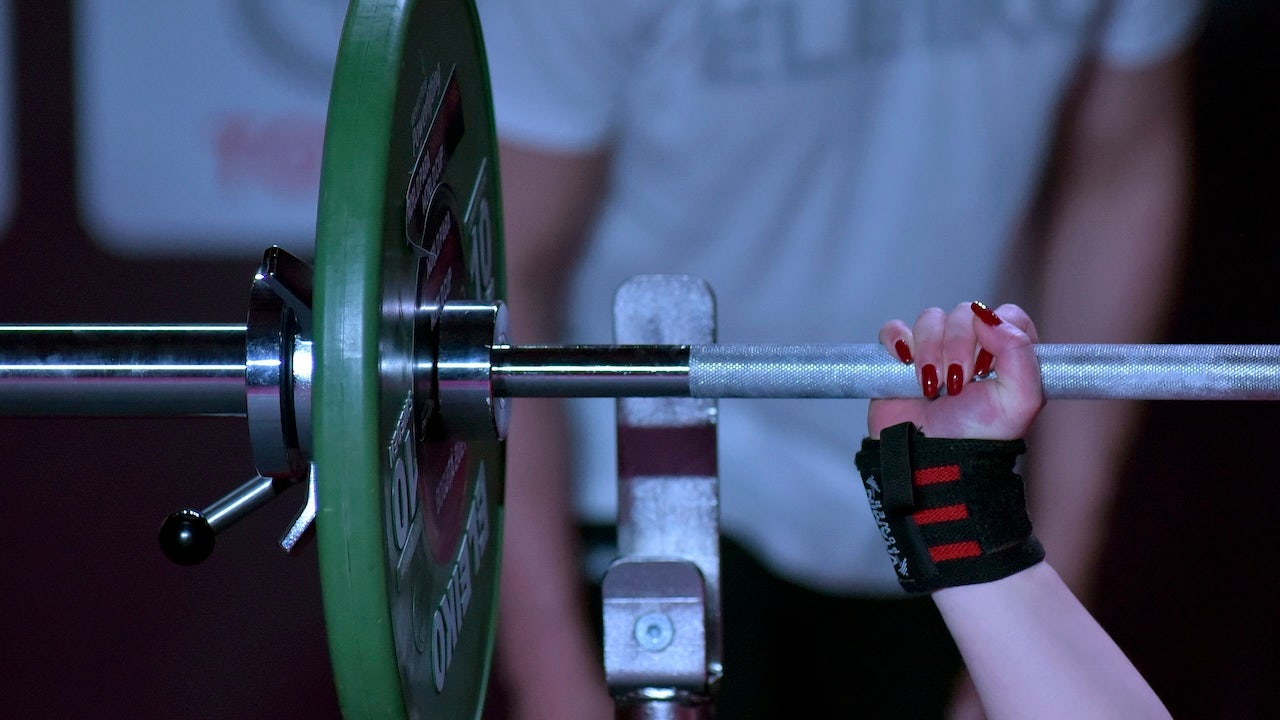
NEWYou can now listen to Fox News articles!
The Minnesota Supreme Court ruled Wednesday that USA Powerlifting’s (USAPL) decision to reject a biological male trans athlete from competition in the women’s category was “discrimination.”
USA Powerlifting has now responded, criticizing the court’s decision.
“Our goal since litigation commenced against USA Powerlifting in 2021 was to present all the facts and evidence of our actions to a jury,” the organization said in a statement to OutKick. “We are pleased that both of Minnesota’s state appellate courts agree we have a right to present a claim of business discrimination to a jury and look forward to offering our evidence toward that end.”
The Minnesota Supreme Court made a ruling in a powerlifting case. (Fox News Digital)
USAPL also praised the decision to let one of its claims proceed. The ruling sent part of the case back to a lower court to determine whether USA Powerlifting has a “legitimate business purpose” for excluding the trans athlete.
“Our goal since litigation commenced against USA Powerlifting (USAPL) in 2021 was to present all the facts and evidence of our actions to a jury,” the organization said. “We are pleased that both of Minnesota’s state appellate courts agree we have a right to present a claim of business discrimination to a jury and look forward to offering our evidence toward that end.”
The trans athlete, JayCee Cooper, sued USA Powerlifting in 2021, alleging the organization engaged in discriminatory practices after rejecting the athlete’s application to compete in the women’s division in 2018, arguing it violated Minnesota’s Human Rights Act.
After a lower court initially sided with Cooper in 2023, the Minnesota Court of Appeals sent the case back to the trial court, saying there were “genuine issues of fact” about whether USA Powerlifting excluded Cooper because of the athlete’s transgender identity and whether the organization had a “legitimate business reason” for doing so.
The state’s Supreme Court then decided to take up the case in July 2024.
The court’s ruling Wednesday said “USA Powerlifting’s policy at the time of the decision was to categorically exclude transgender women from competing in the women’s division.”
“Because USA Powerlifting’s facially discriminatory policy provides direct evidence of discriminatory motive, there is no genuine issue of material fact as to whether Cooper’s transgender status actually motivated USA Powerlifting’s decision to prohibit Cooper from competing. We therefore reverse the part of the court of appeals’ decision on this issue,” Chief Justice Natalie Hudson wrote in Wednesday’s opinion.
“We agree with Cooper that USA Powerlifting’s policy is discriminatory on its face; there is therefore no genuine dispute that USA Powerlifting discriminated against Cooper because of her transgender status.”
USAPL claims it acted for “legitimate reasons.
MINNESOTA TEEN SOFTBALL PLAYER OPENS UP ON TRANS PITCHER PLAYOFF GAME AS TRUMP ADMIN VOWS TITLE IX ENFORCEMENT
USAPL acted for legitimate, non-discriminatory reasons to promote fairness in the sport when determining that Ms. Cooper should not compete in the women’s division due to her male physiology,” USAPL’s statement continued.
“Ms. Cooper was born biologically male and went through puberty as a male. According to unrebutted scientific research, males have up to a 64% strength advantage in powerlifting and suppressing testosterone only reduces the advantage by about 10%. This difference in outcomes makes it fundamentally unfair for a male-to-female transgender powerlifter to compete in the women’s division.”
USAPL also pointed to data suggesting most Americans support protecting women’s sports from trans athletes and the fact that the US Olympic and Paralympic Committee (USOPC) has updated its athlete safety policy to only allow females in women’s sports.
“A 2025 New York Times/Ipsos poll found 79% of Americans oppose allowing transgender athletes to compete in women’s sports,” the organization noted. “Since the Minnesota Supreme Court heard oral arguments in our case, the U.S. Olympic Committee has barred transgender female athletes from competing in women’s events, and the U.K. Supreme Court ruled that the term ‘woman’ applied to biological females.”
The court’s decision was unanimous. Five of the seven Minnesota Supreme Court justices were appointed by Democratic Gov. Tim Walz, and the other two were appointed by former Democratic Gov. Mark Dayton.
Minnesota Republicans have condemned the court’s decision.

Democratic Minnesota Gov. Tim Walz speaks at a get-out-the-vote rally on October 22, 2024, in Madison, Wisconsin. (Scott Olson/Getty Images)
Minnesota Republican House Speaker Lisa Demuth issued a statement decrying the ruling.
“For decades, women and girls fought tirelessly for the rights guaranteed under Title IX. Sadly, those hard-won protections have increasingly come under attack, and today’s decision marks another setback in the fight to protect girls’ sports,” Demuth said.
“This issue is ultimately about safety and fairness, and Minnesotans overwhelmingly agree that their daughters and granddaughters should not be forced to compete against boys. House Republicans are ready to act in the first weeks of next year’s legislative session to make clear that girls’ sports are for girls.”
Follow Fox News Digital’s sports coverage on X, and subscribe to the Fox News Sports Huddle newsletter.
-

 World4 days ago
World4 days agoIsrael continues deadly Gaza truce breaches as US seeks to strengthen deal
-

 News3 days ago
News3 days agoVideo: Federal Agents Detain Man During New York City Raid
-

 Technology4 days ago
Technology4 days agoAI girlfriend apps leak millions of private chats
-

 News4 days ago
News4 days agoTrump news at a glance: president can send national guard to Portland, for now
-

 Business4 days ago
Business4 days agoUnionized baristas want Olympics to drop Starbucks as its ‘official coffee partner’
-

 News3 days ago
News3 days agoBooks about race and gender to be returned to school libraries on some military bases
-

 Politics3 days ago
Politics3 days agoTrump admin on pace to shatter deportation record by end of first year: ‘Just the beginning’
-
Science4 days ago
Peanut allergies in children drop following advice to feed the allergen to babies, study finds
